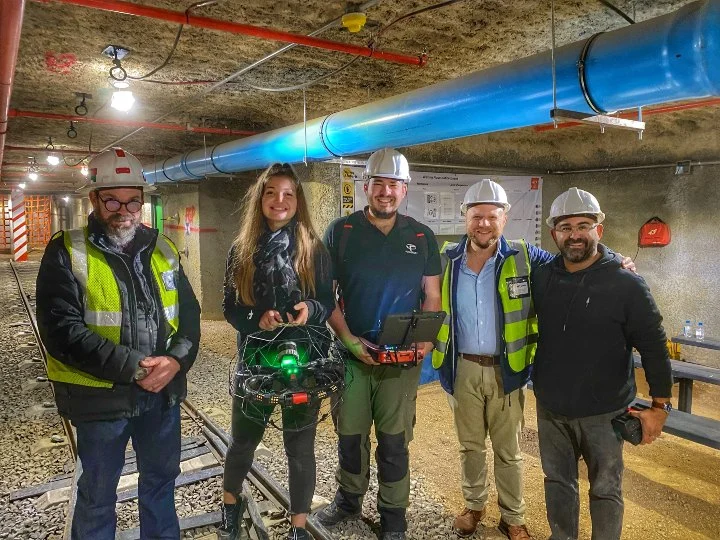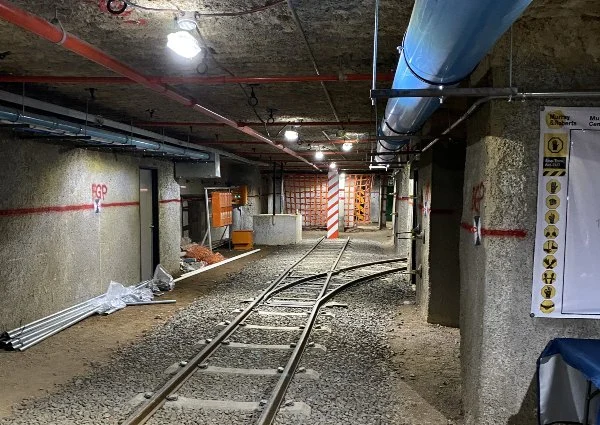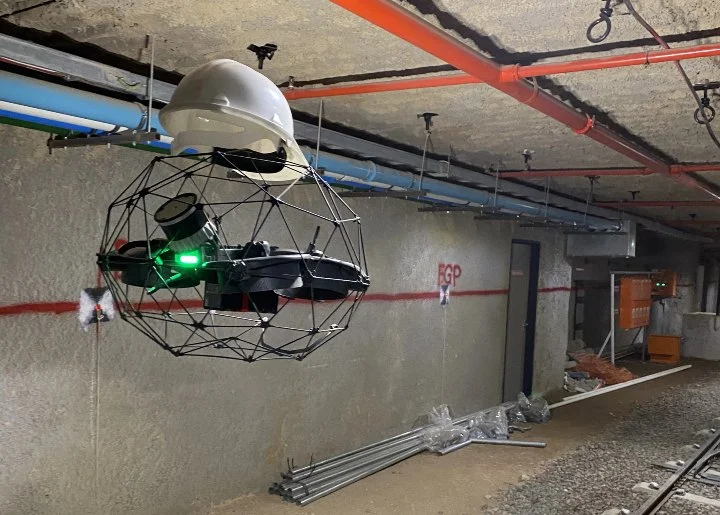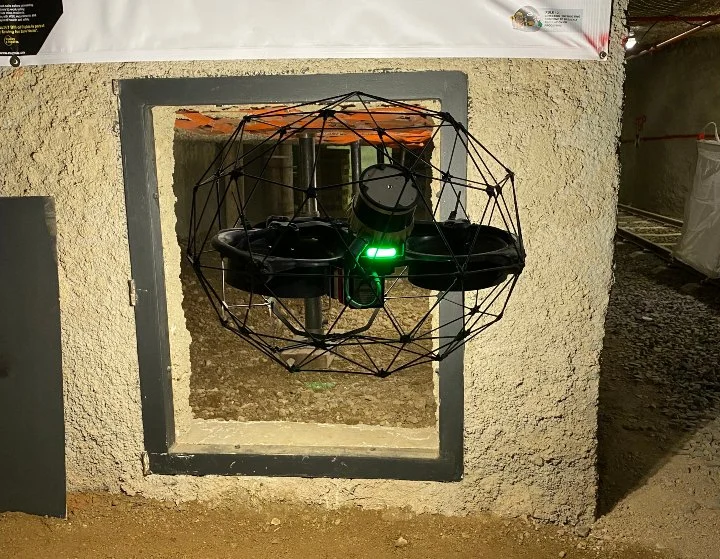In this interview, we speak with Associate Professor Grobler about the growing use of drones in South Africa's mining industry. From enhancing safety and efficiency to revolutionizing data collection, drones are making a significant impact on how mining operations function today. I graduated in 1991 with a mine surveying qualification from the Department of Mining Engineering and Mine Surveying at the University of Johannesburg. As is standard in South Africa, those working in the mining sector must also obtain a Government Certificate of Competency. I earned mine certification in 1994 and spent the next thirteen years working in gold, nickel, and platinum mines across the country. In 2007, I transitioned into academia, joining the same department where I had first studied. My role now involves teaching and guiding the next generation of mining professionals. Associate Professor Grobler with representatives from Flyability and GammaTec The Mining Engineering and Mine Surveying Department will celebrate its 100th anniversary in 2026, making it one of the longest-established programs of its kind in Africa. We offer undergraduate degrees in both mining engineering and mine surveying, as well as advanced studies such as honors and master’s programs. Each year, we train around 600 students in these fields, many of whom go on to work directly in the mining sector. Employability is a core focus of our program. Many of our students already have experience in the mines before they start their studies, or they enter the industry immediately after graduation. A few years ago, we constructed a full-scale simulation mine within a basement on campus. This tunnel mimics real underground conditions and allows students to gain hands-on experience without the risks of real mining environments. This facility is rare globally—there are only a handful of similar simulation mines worldwide. It’s used for practical training and for testing new technologies like drones and robots. A picture of the simulation mine We also use virtual reality tools, including a hydraulic drill rig and a blasting wall, to simulate real-world scenarios. Students can practice placing explosives and conducting blasts safely in a controlled environment. Drones are primarily used for two purposes in mining: surveying and inspections. According to regulations, surface plans need to be updated every three months to a year. Drones help collect this data efficiently, reducing the need for personnel to walk through hazardous areas. For underground inspections, drones can access unstable or hard-to-reach areas, collecting visual and LiDAR data that helps identify issues and improve understanding of the mine layout. Safety and efficiency are the top benefits of drone use in mining. Drones reduce the risk for survey teams by allowing them to collect data remotely. They can quickly gather high-quality data from dangerous or inaccessible areas, which is valuable for engineers, geologists, and other professionals involved in mining operations. During an emergency, drones can be deployed to assess conditions in extreme environments, potentially saving lives. In one recent incident, rescuers lost their lives due to heat exposure while searching for a missing person inside a mine. A drone could have helped evaluate the situation before human intervention was necessary. South Africa has a large mining workforce—over half a million people—and any technology that improves safety is highly valued. Drone usage in South Africa is tightly regulated, but some mining companies are operating without proper licenses or trained pilots. This can lead to legal consequences, including fines or criminal charges. There's also a lack of proper training for drone operators. Simply owning a consumer drone doesn't mean it's suitable for use in a mine. We’re working to raise awareness about the importance of compliance and professional training. The Elios 2 was my first encounter with a drone designed for mining. Its roll cage was a great innovation for collision resistance. However, the Elios 2 had stability issues, which made it less reliable for surveying. The Elios 3, on the other hand, is much more stable. During a test, we even placed a hardhat on top of the drone and it remained perfectly still. The Elios 3 also features a camera that can rotate up and down, which is useful for identifying survey points in tunnels and excavations. The LiDAR sensor on the Elios 3 makes it ideal for mapping inaccessible areas and block caving. Unlike photogrammetry, LiDAR works even in low-light or dusty conditions, which are common in mines. LiDAR can penetrate dust and smog, allowing accurate mapping even when visibility is poor. It also creates real-time 3D maps, helping operators navigate and assess underground spaces safely. The Elios 3's LiDAR sensor glows green as it flies in the simulation mine LiDAR also helps detect geological hazards like faults and dykes, improving safety during hangup inspections in ore passes. We're still in the early stages of drone adoption in South African mining, but the technology is proving its value. Some may question whether drones are just a solution looking for a problem, but I believe they are essential for improving safety and efficiency in the industry. Today, almost every mine in South Africa uses some form of drone technology. The next step is to integrate drones more widely and make them a standard part of mining operations. Instead of relying on external contractors, each mining company should own at least one drone, like the Elios 3, to support daily operations. Ideally, having a drone on each shaft would allow for regular mapping and monitoring, significantly improving safety and productivity. Cork Storage Box,Cork Style Storage Box,Wooden Storage Box,Cork Box Jiangsu Real Sporting Goods Limited Company , https://www1.ruiousporting.com
What has been your career path with mining in South Africa?

Tell us about the Mining Engineering and Mine Surveying Department at the University of Johannesburg. What does the department do?
What kind of unique training facilities do you have in the department?

How are drones being used in mining?
What are the advantages of using a drone in mining?
What are some concerns you have about how people are using drones for work in mines?
How do you think Flyability’s Elios 3 can benefit work in mining?

The Elios 3 carries a LiDAR sensor. What benefits can mining operations realize by using an indoor drone equipped with LiDAR sensing?

What does the future of drones look like for mining operations in South Africa?
July 14, 2025